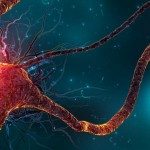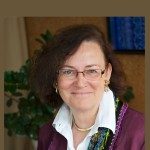Présentation
The enlightenment of the deafness: an holistic approach of Usher syndrome
Recherche Hospitalo-Universitaire en Santé
Professor Christine Petit (Institut Pasteur, Collège de France, Inserm, UPMC) and Dr. Aziz El-Amraoui (Institut Pasteur, Inserm, UPMC) coordinate the part devoted to hearing in the LIGHT4DEAF project (coordinated by Professor José-Alain Sahel, Institut de la vision, Inserm, UPMC,CNRS). LIGHT4DEAF is designed to implement a major, concerted and interdisciplinary effort between scientists, ENT specialists, ophthalmologists and human sciences, vestibular and neuro-cognitive experts in order to fulfil unmet USH patients’ clinical needs.
Blindness and deafness are the two most prevalent sensory impairments, each of which profoundly impacts the life of the affected person, whether child or adult. As a most ambitious goal, perfectly fitting the scope of our DHU “Vision and Handicaps”, LIGHT4DEAF aims at tackling Usher syndrome (USH), the most common form of combined deaf-blindness, often associated with vestibular defects. Professor Christine Petit leads the research on the genetic bases and the pathogenesis of this syndrome since her finding of the first causative twenty years ago.
Clinical centres in the LIGHT4DEAF consortium have developed and will continue to improve a reliable, early molecular diagnosis and protocols for full clinical characterisation of USH symptoms, which will be valuable for the foreseen USH clinical trials. LIGHT4DEAF also aims at fighting sensory impairments caused by USH through the preservation or restoration of visual functions (corrective gene therapy, neuroprotection, retinal prostheses and optogenetics), the restoration of auditory functions (gene therapy, pharmacology and cochlear implants) for the USH forms with progressive hearing loss and the improvement of balance performances (sensory substitution prostheses). These will be tested on appropriate animal models and will lead to clinical trials relying on a morpho-functional characterization of the defective photoreceptor and auditory sensory cells. The effect of these therapies on the severity of the impairments will be analyzed in the overall context of visual compensation for cochlear deficits as well as vestibular deficits. A quantified real-life approach of such interactions is proposed.



